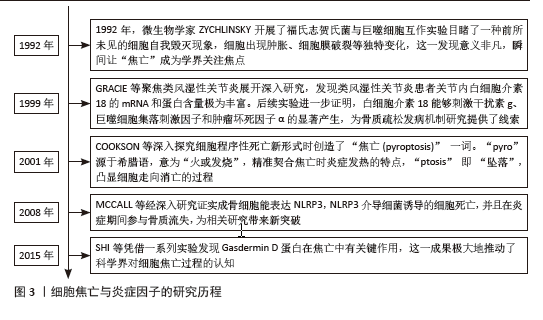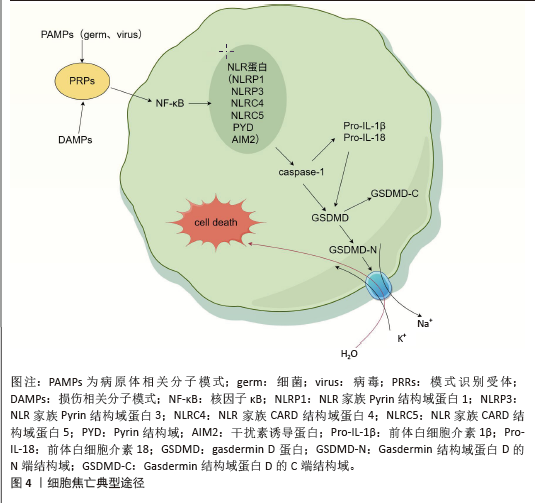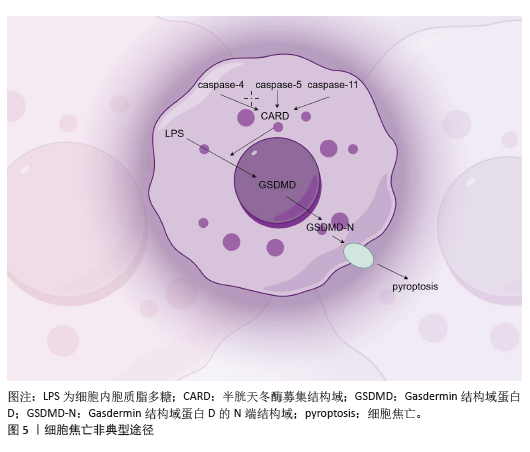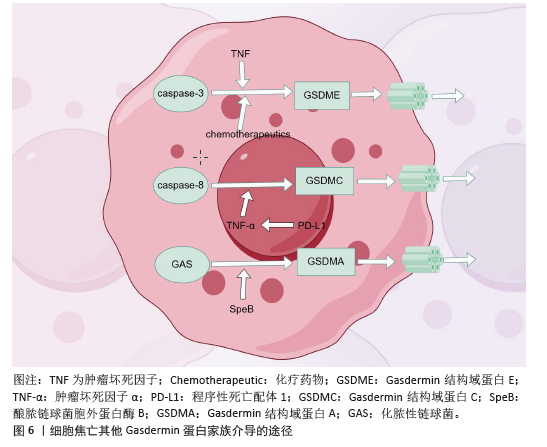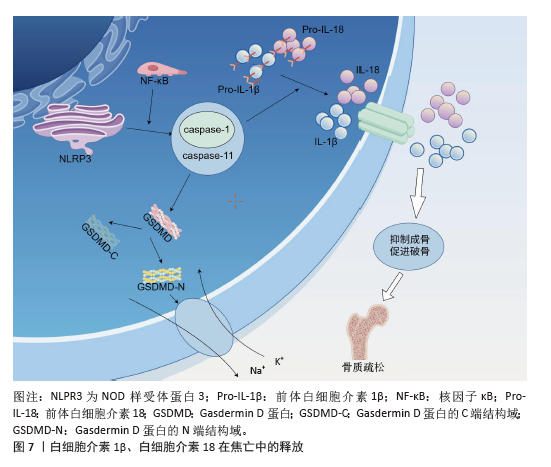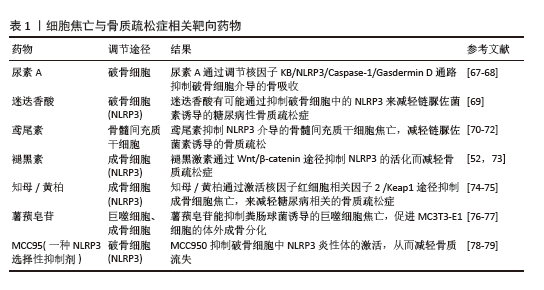[1] ASPRAY TJ, HILL TR. Osteoporosis and the Ageing Skeleton. Subcell Biochem. 2019;91: 453-476.
[2] 杨城,李玮民,冉栋成,等.铁死亡与骨质疏松症[J].中国组织工程研究,2025,29(3): 554-562.
[3] VANDENBROUCKE A, LUYTEN FP, FLAMAING J, et al. Pharmacological treatment of osteoporosis in the oldest old. Clin Interv Aging. 2017;12:1065-1077.
[4] JOHNSTON CB, DAGAR M. Osteoporosis in Older Adults. Med Clin North Am. 2020; 104(5):873-884.
[5] ABDALBARY M, SOBH M, ELNAGAR S, et al. Management of osteoporosis in patients with chronic kidney disease. Osteoporos Int. 2022;33(11):2259-2274.
[6] MIRZA F, CANALIS E. Management of endocrine disease: Secondary osteoporosis: pathophysiology and management. Eur J Endocrinol. 2015;173(3):R131-R151.
[7] SOZEN T, OZISIK L, BASARAN NC. An overview and management of osteoporosis. Eur J Rheumatol. 2017;4(1):46-56.
[8] 方志杰,马抢平,董万涛,等.肠道菌群与骨质疏松症的遗传关系:来自英国数据库211个肠道微生物群分析[J].中国组织工程研究,2025,29(18):3941-3947.
[9] RAO Z, ZHU Y, YANG P, et al. Pyroptosis in inflammatory diseases and cancer. Theranostics. 2022;12(9):4310-4329.
[10] ALMEIDA M, LAURENT MR, DUBOIS V, et al. Estrogens and Androgens in Skeletal Physiology and Pathophysiology. Physiol Rev. 2017;97(1):135-187.
[11] AWAD F, ASSRAWI E, LOUVRIER C, et al. Inflammasome biology, molecular pathology and therapeutic implications. Pharmacol Ther. 2018;187:133-149.
[12] ZENG C, WANG R, TAN H. Role of Pyroptosis in Cardiovascular Diseases and its Therapeutic Implications. Int J Biol Sci. 2019;15(7): 1345-1357.
[13] WU J, LIN S, WAN B, et al. Pyroptosis in Liver Disease: New Insights into Disease Mechanisms. Aging Dis. 2019;10(5):1094-1108.
[14] YU P, ZHANG X, LIU N, et al. Pyroptosis: mechanisms and diseases. Signal Transduct Target Ther. 2021;6(1):128.
[15] LOVELESS R, BLOOMQUIST R, TENG Y. Pyroptosis at the forefront of anticancer immunity. J Exp Clin Cancer Res. 2021; 40(1):264.
[16] ALLEN KD, THOMA LM, GOLIGHTLY YM. Epidemiology of osteoarthritis. Osteoarthritis Cartilage. 2022;30(2):184-195.
[17] SAFIRI S, KOLAHI AA, HOY D, et al. Global, regional and national burden of rheumatoid arthritis 1990-2017: a systematic analysis of the Global Burden of Disease study 2017. Ann Rheum Dis. 2019;78(11):1463-1471.
[18] WANG L, YU W, YIN X, et al. Prevalence of Osteoporosis and Fracture in China: The China Osteoporosis Prevalence Study. JAMA Netw Open. 2021;4(8):e2121106.
[19] ZHOU M, WANG H, ZENG X, et al. Mortality, morbidity, and risk factors in China and its provinces, 1990-2017: a systematic analysis for the Global Burden of Disease Study 2017. Lancet. 2019;394(10204):1145-1158.
[20] GALLUZZI L, VITALE I, AARONSON SA, et al.
Molecular mechanisms of cell death: recommendations of the Nomenclature Committee on Cell Death 2018. Cell Death Differ. 2018;25(3):486-541.
[21] DU T, GAO J, LI P, et al. Pyroptosis, metabolism, and tumor immune microenvironment. Clin Transl Med. 2021;11(8):e492.
[22] JIANG D, CHEN S, SUN R, et al. The NLRP3 inflammasome: Role in metabolic disorders and regulation by metabolic pathways. Cancer Lett. 2018;419:8-19.
[23] PLACE DE, KANNEGANTI TD. Recent advances in inflammasome biology. Curr Opin Immunol. 2018;50:32-38.
[24] BROZ P, DIXIT VM. Inflammasomes: mechanism of assembly, regulation and signalling. Nat Rev Immunol. 2016;16(7):407-420.
[25] SHI J, ZHAO Y, WANG K, et al. Cleavage of GSDMD by inflammatory caspases determines pyroptotic cell death. Nature. 2015;526(7575):660-665.
[26] SBORGI L, RUHL S, MULVIHILL E, et al. GSDMD membrane pore formation constitutes the mechanism of pyroptotic cell death. EMBO J. 2016;35(16):1766-1778.
[27] ING J, WANG K, LIU W, et al. Pore-forming activity and structural autoinhibition of the gasdermin family. Nature. 2016;535(7610): 111-116.
[28] WEITZMANN MN, PACIFICI R. The role of T lymphocytes in bone metabolism. Immunol Rev. 2005;208:154-168.
[29] HE D, ZHOU M, BAI Z, et al. Propionibacterium acnes induces intervertebral disc degeneration by promoting nucleus pulposus cell pyroptosis via NLRP3-dependent pathway. Biochem Biophys Res Commun. 2020;526(3):
772-779.
[30] WANG Y, GAO W, SHI X, et al. Chemotherapy drugs induce pyroptosis through caspase-3 cleavage of a gasdermin. Nature. 2017; 547(7661):99-103.
[31] NEWTON K, WICKLIFFE KE, MALTZMAN A, et al. Activity of caspase-8 determines plasticity between cell death pathways. Nature. 2019;575(7784):679-682.
[32] HOU J, ZHAO R, XIA W, et al. PD-L1-mediated gasdermin C expression switches apoptosis to pyroptosis in cancer cells and facilitates tumour necrosis. Nat Cell Biol. 2020;22(10): 1264-1275.
[33] DINARELLO CA. Overview of the interleukin-1 family of ligands and receptors. Semin Immunol. 2013;25(6):389-393.
[34] ONO T, NAKASHIMA T. Recent advances in osteoclast biology. Histochem Cell Biol. 2018;149(4):325-341.
[35] LACATIVA PG, FARIAS ML. Osteoporosis and inflammation. Arq Bras Endocrinol Metabol. 2010;54(2):123-132.
[36] WEI S, KITAURA H, ZHOU P, et al. IL-1 mediates TNF-induced osteoclastogenesis. J Clin Invest. 2005;115(2):282-290.
[37] FENG C, XIAO L, YU JC, et al. Simvastatin promotes osteogenic differentiation of mesenchymal stem cells in rat model of osteoporosis through BMP-2/Smads signaling pathway. Eur Rev Med Pharmacol Sci. 2020; 24(1):434-443.
[38] GE Y, HUANG M, YAO YM. Recent advances in the biology of IL-1 family cytokines and their potential roles in development of sepsis. Cytokine Growth Factor Rev. 2019;45:24-34.
[39] GONG W, SHI Y, REN J. Research progresses of molecular mechanism of pyroptosis and its related diseases. Immunobiology. 2020;225(2):151884.
[40] GRACIE JA, FORSEY RJ, CHAN WL, et al. A proinflammatory role for IL-18 in rheumatoid arthritis. J Clin Invest. 1999;104(10): 1393-1401.
[41] GAO Y, GRASSI F, RYAN MR, et al. IFN-gamma stimulates osteoclast formation and bone loss in vivo via antigen-driven T cell activation. J Clin Invest. 2007;117(1):122-132.
[42] YI YS. Role of inflammasomes in inflammatory autoimmune rheumatic diseases. Korean J Physiol Pharmacol. 2018;22(1):1-15.
[43] DOSTERT C, PETRILLI V, Van BRUGGEN R, et al. Innate immune activation through Nalp3 inflammasome sensing of asbestos and silica. Science. 2008;320(5876):674-677.
[44] ZHU X, ZHANG K, LU K, et al. Inhibition of pyroptosis attenuates Staphylococcus aureus-induced bone injury in traumatic osteomyelitis. Ann Transl Med. 2019; 7(8):170.
[45] GREENE E, FLEES J, DHAMAD A, et al. Double-Stranded RNA Is a Novel Molecular Target in Osteomyelitis Pathogenesis: A Translational Avian Model for Human Bacterial Chondronecrosis with Osteomyelitis. Am J Pathol. 2019; 189(10):2077-2089.
[46] YANG C, SONG B, HAN L, et al. Study on the mechanism of NLRP3 effect on the skeleton of de-ovalized mice. Biochem Biophys Rep. 2023;35:101496.
[47] PLOTKIN LI, BELLIDO T. Osteocytic signalling pathways as therapeutic targets for bone fragility. Nat Rev Endocrinol. 2016;12(10): 593-605.
[48] WANG L, CHEN K, WAN X, et al. NLRP3 inflammasome activation in mesenchymal stem cells inhibits osteogenic differentiation and enhances adipogenic differentiation. Biochem Biophys Res Commun. 2017;484(4): 871-877.
[49] WANG X, JIANG M, HE X, et al. N‑acetyl cysteine inhibits the lipopolysaccharide‑induced inflammatory response in bone marrow mesenchymal stem cells by suppressing the TXNIP/NLRP3/IL‑1beta signaling pathway. Mol Med Rep. 2020;22(4):3299-3306.
[50] WU Z, DING Q, YUE M, et al. Caspase-3/GSDME-mediated pyroptosis leads to osteogenic dysfunction of osteoblast-like cells. Oral Dis. 2024;30(3):1392-1402.
[51] RUAN H, ZHANG H, FENG J, et al. Inhibition of Caspase-1-mediated pyroptosis promotes osteogenic differentiation, offering a therapeutic target for osteoporosis. Int Immunopharmacol. 2023;124(Pt B):110901.
[52] XU L, ZHANG L, WANG Z, et al. Melatonin Suppresses Estrogen Deficiency-Induced Osteoporosis and Promotes Osteoblastogenesis by Inactivating the NLRP3 Inflammasome. Calcif Tissue Int. 2018;103(4): 400-410.
[53] LI J, WANG X, YAO Z, et al. NLRP3-Dependent Crosstalk between Pyroptotic Macrophage and Senescent Cell Orchestrates Trauma-Induced Heterotopic Ossification During Aberrant Wound Healing. Adv Sci (Weinh). 2023;10(19):e2207383.
[54] XIA C, OU S, YANG Y, et al. ELP2-NLRP3-GSDMD/GSDME-mediated pyroptosis is induced by TNF-alpha in MC3T3-E1 cells during osteogenic differentiation. J Cell Mol Med. 2023;27(24):4093-4106.
[55] ALAM MI, MAE M, FARHANA F, et al. NLRP3 Inflammasome Negatively Regulates RANKL-Induced Osteoclastogenesis of Mouse Bone Marrow Macrophages but Positively Regulates It in the Presence of Lipopolysaccharides. Int J Mol Sci. 2022;23(11):6096.
[56] WU YL, ZHANG CH, TENG Y, et al. Propionate and butyrate attenuate macrophage pyroptosis and osteoclastogenesis induced by CoCrMo alloy particles. Mil Med Res. 2022;9(1):46.
[57] QU C, BONAR SL, HICKMAN-BRECKS CL, et al. NLRP3 mediates osteolysis through inflammation-dependent and -independent mechanisms. FASEB J. 2015;29(4): 1269-1279.
[58] JIANG M, SHANG Z, ZHANG T, et al. Study on the role of pyroptosis in bone resorption induced by occlusal trauma with or without periodontitis. J Periodontal Res. 2022;57(3):448-460.
[59] LI M, YANG D, YAN H, et al. Gasdermin D maintains bone mass by rewiring the endo-lysosomal pathway of osteoclastic bone resorption. Dev Cell. 2022;57(20): 2365-2380.
[60] YING Y, JIN J, YE L, et al. Phloretin Prevents Diabetic Cardiomyopathy by Dissociating Keap1/Nrf2 Complex and Inhibiting Oxidative Stress. Front Endocrinol (Lausanne). 2018;9:774.
[61] LIU F, FENG M, XING J, et al. Timosaponin alleviates oxidative stress in rats with high fat diet-induced obesity via activating Nrf2/HO-1 and inhibiting the NF-kappaB pathway. Eur J Pharmacol. 2021;909:174377.
[62] CHAI S, YANG Y, WEI L, et al. Luteolin rescues postmenopausal osteoporosis elicited by OVX through alleviating osteoblast pyroptosis via activating PI3K-AKT signaling. Phytomedicine. 2024;128:155516.
[63] SUN D, PENG Y, GE S, et al. USP1 Inhibits NF-kappaB/NLRP3 Induced Pyroptosis through TRAF6 in Osteoblastic MC3T3-E1 Cells. J Musculoskelet Neuronal Interact. 2022;22(4):536-545.
[64] CAO S, WANG Y, ZHANG Y, et al. Naringenin can Inhibit the Pyroptosis of Osteoblasts by Activating the Nrf2/HO-1 Signaling Pathway and Alleviate the Differentiation Disorder of Osteoblasts Caused by Microgravity. J Agric Food Chem. 2024;72(46):25586-25600.
[65] DE MARTINIS M, SIRUFO MM, GINALDI L. Osteoporosis: Current and Emerging Therapies Targeted to Immunological Checkpoints. Curr Med Chem. 2020;27(37):6356-6372.
[66] WANG H, LUO Y, WANG H, et al. Mechanistic advances in osteoporosis and anti-osteoporosis therapies. MedComm (2020). 2023;4(3):e244.
[67] D’AMICO D, ANDREUX P A, VALDES P, et al. Impact of the Natural Compound Urolithin A on Health, Disease, and Aging. Trends Mol Med. 2021;27(7):687-699.
[68] TAO H, LI W, ZHANG W, et al. Urolithin A suppresses RANKL-induced osteoclastogenesis and postmenopausal osteoporosis by, suppresses inflammation and downstream NF-kappaB activated pyroptosis pathways. Pharmacol Res. 2021;174:105967.
[69] LI Q, TAO X, ZHANG Y. Rosmarinic acid alleviates diabetic osteoporosis by suppressing the activation of NLRP3 inflammasome in rats. Physiol Int. 2022.doi: 10.1556/2060.2022.00154.
[70] LIU S, CUI F, NING K, et al. Role of irisin in physiology and pathology. Front Endocrinol (Lausanne). 2022;13:962968.
[71] KAWAO N, IEMURA S, KAWAGUCHI M, et al. Role of irisin in effects of chronic exercise on muscle and bone in ovariectomized mice. J Bone Miner Metab. 2021;39(4):547-557.
[72] BEHERA J, ISON J, VOOR M J, et al. Exercise-Linked Skeletal Irisin Ameliorates Diabetes-Associated Osteoporosis by Inhibiting the Oxidative Damage-Dependent miR-150-FNDC5/Pyroptosis Axis. Diabetes. 2022; 71(12):2777-2792.
[73] ZHANG Y, LIU T, YANG H, et al. Melatonin: A novel candidate for the treatment of osteoarthritis. Ageing Res Rev. 2022;78: 101635.
[74] XU P, LIN B, DENG X, et al. Anti-osteoporosis effects of Anemarrhenae Rhizoma / Phellodendri Chinensis Cortex herb pair and its major active components in diabetic rats and zebrafish. J Ethnopharmacol. 2022; 293:115269.
[75] FU F, LUO H, Du Y, et al. AR/PCC herb pair inhibits osteoblast pyroptosis to alleviate diabetes-related osteoporosis by activating Nrf2/Keap1 pathway. J Cell Mol Med. 2023; 27(22):3601-3613.
[76] BANDOPADHYAY S, ANAND U, GADEKAR VS, et al. Dioscin: A review on pharmacological properties and therapeutic values. Biofactors. 2022;48(1):22-55.
[77] YIN W, LIU S, DONG M, et al. A New NLRP3 Inflammasome Inhibitor, Dioscin, Promotes Osteogenesis. Small. 2020;16(1):e1905977.
[78] LI H, GUAN Y, LIANG B, et al. Therapeutic potential of MCC950, a specific inhibitor of NLRP3 inflammasome. Eur J Pharmacol. 2022;928:175091.
[79] NI B, PEI W, QU Y, et al. MCC950, the NLRP3 Inhibitor, Protects against Cartilage Degradation in a Mouse Model of Osteoarthritis. Oxid Med Cell Longev. 2021; 2021:4139048. |
